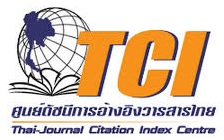การผสมผสานระบบจัดการเนื้อหาทางการเรียนรู้กับเว็บล็อกภายใต้กรอบการเรียนรู้อิเล็กทรอนิกส์
Keywords:
e-learning, การเรียนรู้อิเล็กทรอนิกส์, content management system, ระบบจัดการเนื้อหา, learning content management system, ระบบจัดการเนื้อหาทางการเรียนรู้, weblog, เว็บล็อกAbstract
ระบบจัดการเนื้อหา คือระบบที่ช่วยลดทรัพยากรในการพัฒนาและบริหารเว็บไซต์ ทั้งทางด้านทรัพยากรบุคคลต้นทุน และเวลา โดยผู้ใช้ไม่จำเป็นต้องมีความรู้ด้านภาษาโปรแกรมที่ลึกซึ้งก็ใช้งานได้ ปัจจุบันระบบนี้ถูกนำไปใช้งานหลายรูปแบบ เช่น เว็บท่า เว็บอีคอมเมิร์ซ วิกิ ระบบจัดการเนื้อหาทางการเรียนรู้ และระบบเว็บล็อก ฯลฯ บทความนี้ได้ศึกษาและวิเคราะห์กรอบการทำงานร่วมกันของระบบจัดการเนื้อหาที่มีอยู่ โดยเน้นศึกษาลักษณะสำคัญ ที่เอื้อประโยชน์โดยตรงต่อการเรียนรู้อิเล็กทรอนิกส์ของระบบจัดการเนื้อหาสองรูปแบบ ได้แก่ ระบบจัดการเนื้อหาทางการเรียนรู้ ที่เน้นการใช้งานเฉพาะกลุ่มผู้เรียน และระบบเว็บล็อก ที่เน้นการใช้งานแบบสาธารณะในกลุ่มบุคคลทั่วไป รวมทั้ง ได้แสดงความสัมพันธ์ระหว่างลักษณะสำคัญของระบบทั้งสองกับองค์ประกอบของการเรียนรู้อิเล็กทรอนิกส์ โดยใช้กรอบการเรียนรู้อิเล็กทรอนิกส์ของ Khan (2005) และแบบจำลองการเรียนรู้อิเล็กทรอนิกส์แบบ 3P ในการอธิบาย นอกจากนั้น บทความนี้ได้แสดงให้เห็นถึงความเป็นไปได้ของการผสมผสานระบบจัดการเนื้อหาทางการเรียนรู้และระบบเว็บล็อกเข้าด้วยกัน เพื่อพัฒนาเป็นระบบใหม่ที่มีประสิทธิภาพต่อการเรียนรู้อิเล็กทรอนิกส์มากยิ่งขึ้นในรูปแบบของเว็บไซต์ประเภทเครือข่ายทางสังคมReferences
กิตติ กันภัย. (2543). มองสื่อใหม่ มองสังคมใหม่. กรุงเทพฯ: เอดิสัน เพรส โพรดักส์.
สุธี พงศาสกุลชัย และสุรเชษฐ์ วงศ์ชัยพรพงษ์. (2549). คัมภีร์ Flash MX 2004 ActionScript. พิมพ์ครั้งที่ 2. กรุงเทพฯ: สำนักพิมพ์ เคทีพี.
Amsler, A. and Nichols, R. (2008). Blazing a web CMS trail at the University of Delaware. The 36th AnnualACM SIGUCCS Conference on User Services Conference: 137-140.
Boyd, D. (2008). Why Youth [Heart] Social Network Sites: The Role of Networked Publics in Teenager Social Life. In Buckingham, D. (eds.). Youth, Identify, and Digital Media (pp 119 - 142). USA: Aptara.
Browning, P. and Lowndes, M. (2001). Content Management System [On-line]. Available: http://www.jisc.ac.uk/whatwedo/services techwatch /reports/ horizonscanning/hs0102.aspx
Efimova, L. and Fiedler, S. (2004). Learning Webs: Learning in Weblog Networks [On-line]. Available: https://doc.novay.nl/dsweb/Get/Document-35344/LearningWebs.pdf
Garrison, D. R. and Anderson, T. (2003). E-Learning in the 21st Century: A Framework for Research and Practice. London: Routledge Falmer.
Gosselin, D., et al. (2003). The Web Warrior Guide to Web Design Technologies. Canada: Thomson.
Helen, S. D. and Wagner, C. (2006). Weblog success: Exploring the role of technology. Int. J. Human-Computer
Studies 64: 789-798.
Holmes, B. and Gardner, J. (2006). e-Learning Concept and Practice. London: SAGE Publications.
Horton, W. and Horton, K. (2003). E-Learning Tools and Technologies. USA: Wiley Publishing.
Khan, B. H. (2004). The People–Process–Product Continuum in E-Learning: The E-Learning P3 Model. Educational Technology 44 (5): 33-40.
Khan, B. H. (2005). Managing E-Learning Strategies: Design, Delivery, Implementation, and Evaluation. London: Information Science Publishing.
Morrison, D. (2003). E-learning Strategies: How to get implementation and delivery right first time. England:
John Wiley & Sons.
Prakash, L. S., Saini, D. K. and Kutti, N. S. (2009). Integrating EduLearn learning content management system
(LCMS) with cooperating learning object repositories (LORs) in a peer to peer (P2P) architectural framework. SIGSOFT Softw. Eng. Notes 34 (3): 1-7.
Price, C. (2009). Compare CMS-Part 1-Introduction [On-line]. Available: http://www.a3webtech.com/index.php/compare-cms.html
Rainville-Pitt, S. and D’Amour, J. M. (2007). Using a CMS to Create Fully Accessible Websites. The 2007 International Cross-Disciplinary Conference on Web Accessibility (225): 130-131.
Staab, S., et al. (2000). Semantic Community Web Portals. Computer Networks 33: 473-491.





 ThaiJO
ThaiJO